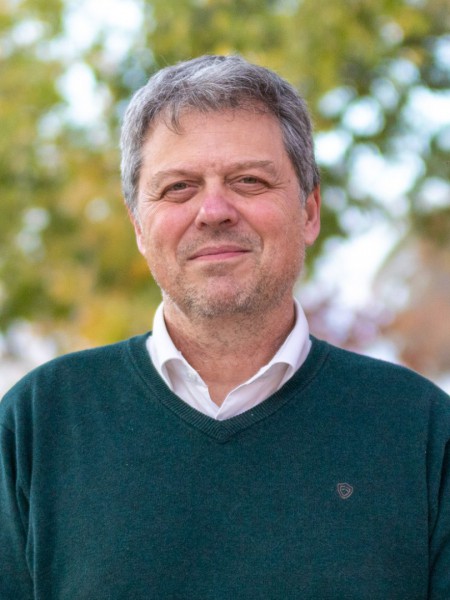abstract
Surfaces with biological functionalities are of great interest for biomaterials, tissue engineering, biophysics, and for controlling biological processes. The layer-by-layer (LbL) assembly is a highly versatile methodology introduced 30 years ago, which consists of assembling complementary polyelectrolytes or biomolecules in a stepwise manner to form thin self-assembled films. In view of its simplicity, compatibility with biological molecules, and adaptability to any kind of supporting material carrier, this technology has undergone major developments over the past decades. Specific applications have emerged in different biomedical fields owing to the possibility to load or immobilize biomolecules with preserved bioactivity, to use an extremely broad range of biomolecules and supporting carriers, and to modify the film's mechanical properties via crosslinking. In this review, the focus is on the recent developments regarding LbL films formed as 2D or 3D objects for applications in drug delivery and tissue engineering. Possible applications in the fields of vaccinology, 3D biomimetic tissue models, as well as bone and cardiovascular tissue engineering are highlighted. In addition, the most recent technological developments in the field of film construction, such as high-content liquid handling or machine learning, which are expected to open new perspectives in the future developments of LbL, are presented. Layer-by-layer (LbL) films represent a powerful approach for surface functionalization and for the production of free-standing objects. This article reviews recent applications in drug delivery and tissue engineering, coming closer to clinical applications. New methods for LbL deposition and artificial intelligence will foster LbL developments in the near future.image
keywords
POLYELECTROLYTE MULTILAYER FILMS; MATRIX-BOUND BMP-2; CELL-ADHESION; EXTRACELLULAR MICROENVIRONMENTS; BIOMEDICAL APPLICATIONS; ENDOTHELIAL-CELLS; STIFFNESS; CONSTRUCTION; SURFACE; POLYMERS
subject category
Engineering; Science & Technology - Other Topics; Materials Science
authors
Borges, J; Zeng, JF; Liu, XQ; Chang, H; Monge, C; Garot, C; Ren, KF; Machillot, P; Vrana, NE; Lavalle, P; Akagi, T; Matsusaki, M; Ji, J; Akashi, M; Mano, JF; Gribova, V; Picart, C
our authors
Projects
CICECO - Aveiro Institute of Materials (UIDB/50011/2020)
CICECO - Aveiro Institute of Materials (UIDP/50011/2020)
Associated Laboratory CICECO-Aveiro Institute of Materials (LA/P/0006/2020)
acknowledgements
C.P.'s team was funded by the European Commission (ERC BIOMIM, GA259370, ERC BioactiveCoatings GA692924, ERC Regenerbone GA790435) and by the Agence Nationale de la Recherche (ANR, project ANR-17-CE13-022 CODECIDE, ANR-18-CE17-0016 and by FUI-BPI France N degrees DOS0062033/0). C.P. was a senior member of Institut Universitaire de France (2016-2021). J.F.M.'s team was supported by the European Union's Horizon Europe research and innovation program under grant agreement no. 101079482 ("SUPRALIFE"), as well as by the European Research Council under grant agreement no. 883370 (ERC Advanced Grant "REBORN"). J.B. gratefully acknowledges the financial support of the Portuguese Foundation for Science and Technology (FCT) through the individual Assistant Researcher contract (2020.00758.CEECIND) under the Scientific Employment Stimulus-Individual Call. This work was developed within the scope of the project CICECO-Aveiro Institute of Materials, UIDB/50011/2020, UIDP/50011/2020, and LA/P/0006/2020, financed by national funds through the FCT/MCTES (PIDDAC). Dr. C.M. acknowledges the Agence Nationale de la Recherche contre le Sida et les Hepatites virales (ANRS) (grant number ECTZ60600), the European Union's Horizon 2020 research and innovation program (PolyVac, grant number 751061), Sidaction (grant number 11623), and the Agence Nationale de la Recherche (ANR) (BuccaVac, grant number 192974). SPARTHA Medical: This work was funded by the European Union under grant agreement number 101058554 (EIC Accelerator-SPARTHACUS). However, the views and opinions expressed are solely those of the author(s) and do not necessarily reflect those of the European Union. Neither the European Union nor the granting authority can be held responsible for them. This work was funded by BPI (French Public Bank of Investment) ADD (Aide Deep Tech programme) no 3981662. M.M. acknowledges the Grant-in-Aid for Scientific Research (A) (20H00665). Dr. P.L. acknowledges the ANR for supporting the projects ANR-20-CE19-0022 BIOFISS and ANR-22-CE19-0024 SAFEST.



